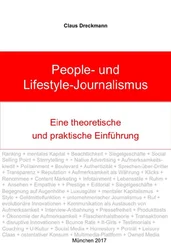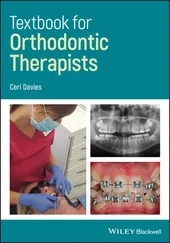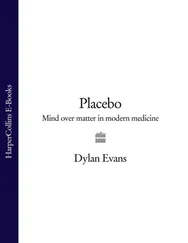High red meat consumption, and especially processed meat like bacon, sausages, salami or other cold cuts, may increase the risk for chronic diseases (e.g., T2DM and cardiovascular diseases) and certain cancers, including colorectal cancer. Red meat consumption has also been associated with elevated blood pressure and all‐cause mortality.
There are several possible mechanisms by which red meat may increase mortality risk. Saturated fat, cholesterol, and heme iron in red meat may stimulate certain atherosclerotic processes and therefore affect the onset of the aforementioned chronic diseases. Moreover, it has been found that people who consume large quantities of meat may consume fewer fruits and vegetables, which have been shown to decrease cardiovascular risk.
During the high‐temperature cooking processes of red meat, several potential carcinogens, such as polycyclic aromatic hydrocarbons and heterocyclic amines, are formed, increasing the risk of cancer. Also, the high sodium content in processed meat has been shown to increase the risk for stomach cancer, hypertension, and vascular stiffness. The World Cancer Research Fund recommends no more than three portions of red meat per week, which is equivalent to no more that 350–500 g (cooked weight or 525–750 g raw weight), and minimal consumption of processed meat.
Diets restricted in red meat may have little effect on cardiometabolic outcomes, cancer incidence, and mortality.
However, a systematic review of 12 randomized trials with 54,000 subjects suggested that diets restricted in red meat may have little effect on cardiometabolic outcomes and cancer incidence and mortality. Apparently, the effect of red meat consumption on human health is mediated by many other factors, mainly the specific genetic and lifestyle characterists of each individual.
The Western dietary pattern is generally characterized by high intakes of red and processed meat, refined grains/carbohydrates, fast food, eggs, high‐sugar drinks and sweets/desserts, and low intake of fruits and vegetables. According to the INTERHEART study, a standardized case‐control study with participants from 52 countries (i.e., 5761 cases and 10,646 controls), an unhealthy diet increases CVD risk by 30%. Western‐type diets are considered a major risk factor for developing hypertension due to their high content of salt and have been linked to arterial stiffness. Findings from the ATTICA study in Greece suggest that the sodium content of processed foods can be several‐fold higher compared to similar homemade meals; this difference may explain, at least in part, the increased CVD risk in people eating processed foods.
The Western dietary pattern has also been associated with an increased risk for MetS, general and central obesity, and higher BMI and waist circumference in several countries. The Atherosclerosis Risk Communities (ARIC) study followed the dietary patterns of 3782 participants (aged 45–64 years) for 9 years; those with the highest Western dietary pattern scores had 18% greater risk of developing MetS compared to those with the lowest scores. Other prospective data have shown similar associations between Western‐type diets and the prevalence of obesity in adults.
A large body of literature suggests that such an unhealthy dietary pattern may also increase the risk of developing T2DM via exacerbating insulin secretion and insulin resistance. Furthermore, Western‐type diets increase the production of ROS, promote low‐grade inflammation, and abnormally activate the sympathetic nervous system and the renin‐angiotensin system. Finally, high‐fat diets seem to alter the structure of the microbiome even in the absence of obesity; these changes have been associated with metabolic diseases, including cancer, T2DM, and others.
Inactivity is defined as doing less physical activity (PA) than the recommended levels. In 2021, the recommendation for children and youth aged 5–17 was to do at least 60 minutes of moderate‐ to vigorous‐intensity PA daily, preferably aerobic and performed as play. For adults, the 2021 recommendations call for at least 150 minutes of moderate‐intensity aerobic PA per week, or at least 75 minutes of vigorous‐intensity aerobic PA throughout the week, or an equivalent combination of moderate‐ and vigorous‐intensity activity.
More than one in four adults globally (~1.5 billion people) were physically inactive in 2018. Women were less active than men (32% men were active vs. 23% women). Citizens from high‐income countries were more inactive (37%) compared with citizens from middle‐income and low‐income countries (16%). Older adults were less active than younger adults ( Figures 3.1and 3.2a and b).
Regarding the pediatric population, 81% of adolescents aged 11–17 years did not meet physical activity recommendations in 2010. Adolescents from the Southeast Asia region showed the lowest prevalence of insufficient PA (74%), whereas the highest were observed in the Asian Pacific region, the Eastern Mediterranean region, and the Sub‐Saharan African region (92%, 89%, and 85%, respectively). Globally, adolescent girls were generally less active than adolescent boys, with 85% vs. 78% not meeting WHO recommendations. Furthermore, the prevalence of inactivity was highest in the upper‐middle‐income countries and lowest in the lower‐middle‐income countries, for all age groups.
The high prevalence of physical inactivity globally is attributed to insufficient participation in PA during leisure time and an increase in sedentary behavior during occupational, domestic, and transportation activities. Research into the correlates (i.e., factors associated with activity) or determinants (i.e., those with a causal relationship) has proliferated in the past two decades, mostly focused on individual‐level factors in high‐income countries, and has shown that age, sex, health status, self‐esteem, and motivation are associated with PA. However, recently developed ecological models suggest that various components of the social and physical environment, e.g., urban planning, transportation systems, parks, and trails, significantly affect our daily physical activity.
Modern urbanization has resulted in environmental changes that are thought to discourage participation in PA in all domains, such as an increase in violence, high‐density traffic, and air pollution, as well as a lack of parks, sidewalks, and sports/recreation facilities. The aforementioned factors might explain, at least in part, the lower prevalence of physical inactivity in low‐ and lower‐middle‐income countries, due to maintenance of work and transport‐related PA, and the higher prevalence observed in higher‐income countries, where the increased automation of life creates opportunities for sedentariness.
Inactive adults have 20–30% increased risk of all‐cause mortality, compared to those who engage in at least 150 minutes of moderate‐intensity PA per week ( Figure 3.3). A study by Lee et al. in 2012 revealed that physical inactivity can be deemed responsible for 6% of the burden of disease from coronary heart disease, 7% of T2DM, 10% of breast cancer, and 10% of colon cancer. Moreover, it was estimated that physical inactivity causes 9% of premature mortality, or more than 5.3 million of the 57 million deaths that occurred worldwide in 2008; if inactivity were decreased by 10% or 25%, more than 533,000 and 1.3 million deaths could be averted every year, respectively. Interestingly, using life‐table analysis, Lee et al. also showed that the elimination of physical inactivity would increase the life expectancy of the world's population by 0.68 years ( Figure 3.4).
Читать дальше












